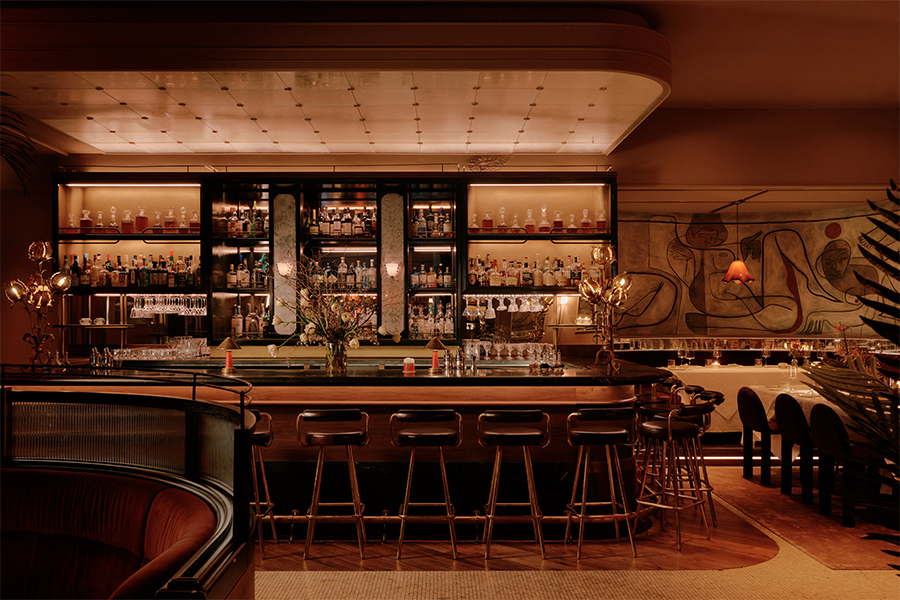Restaurateur Richie Notar is a fitting heir to the home of Harlow, in New York’s Midtown neighborhood. The building, which dates to the 1930s and was a gift from William Randolph Hearst to actress Marion Davies, was conceived as an entertaining space. Notar wanted his newest venture-the first since Nobu-to carry on the torch.
.jpg)
The owners of Meyer Davis Studio, a New York-based boutique design firm, kept this front of mind when designing the restaurant. “Richie really wanted to create a place where his friends could come and hang out,” says co-owner Will Meyer. “It’s almost like he’s hosting his own party there every night.”
.jpg)
Yet time had taken a toll on the building, and it wasn’t easy transforming the cavernous, 200-seat restaurant. “The bizarre thing is it doesn’t have any street presence,” Meyer says. “When you go in, it’s down several steps in the back of the building. Only one area-the conservatory-has natural light; everything else is windowless. So the challenge was, how do you create a unique dining experience when you’re limited on light?”
.jpg)
Meyer Davis retained existing chandeliers and original stained glass in the main dining room and added modern hanging pendants that impart a sense of playfulness. On the restaurant’s perimeter, they focused on indirect, amber lighting to give warmth throughout. Decorative chandeliers and sconces on the walls balance the mix, and tables in the main dining room are backlit for extra glow.
.jpg)
Restoration took much time and energy before they could move on to the design. “We wanted to create a luxe, residential environment, so we selected steel blues and pops of other colors throughout to give contrast,” says co-owner Gray Davis. “The rugs we use almost look like old Oriental rugs that are patched together. We didn’t want everything to feel too new and fresh-we wanted it to have a little patina to it.”
.jpg)
Graphic touches-from a striped gallery ceiling in the entryway to modern art throughout-bridge old and new. The oyster bar in the back of the dining room harkens to the past with a handpainted mirror, while the greenhouse was converted into an indoor conservatory with modern touches.
.jpg)
“A lot of what I would like to think were the goals that Randolph Hearst had for making this an awesome party place are what we’re doing, just in a new era 100 years later,” Davis says. “And to me, that makes it even more interesting.”
.jpg)



